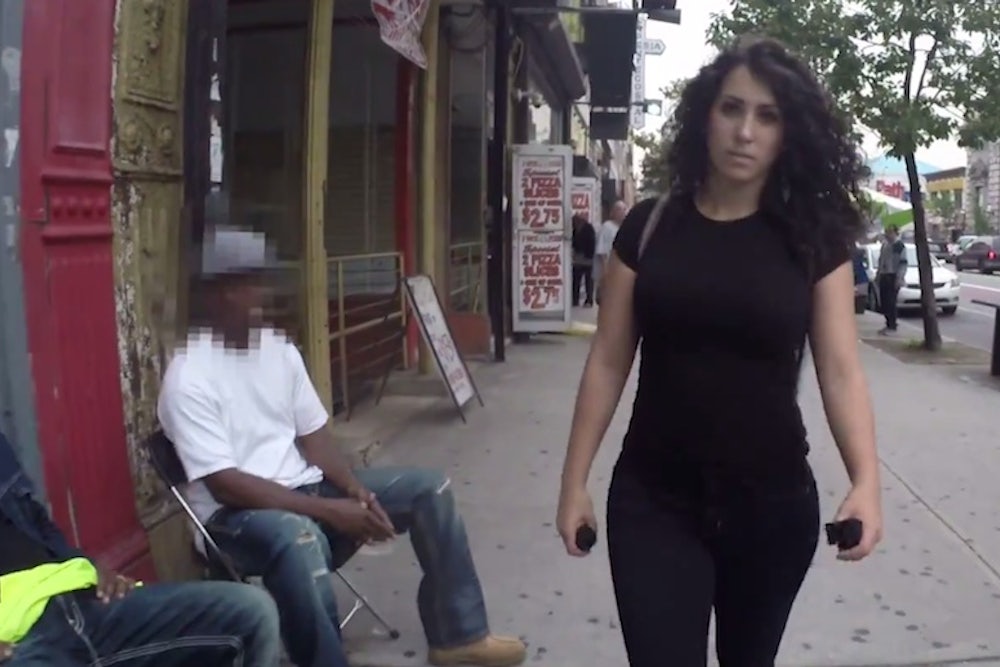Earlier this week, a video of a woman fielding street harassment around Manhattan went viral. It was posted by a group called Hollaback!, an anti-harassment organization, and was a collaboration with viral videographer Rob Bliss. The woman in the video, Shoshana Roberts, carried microphones in her hands and walked behind Bliss, who had a hidden camera attached to his backpack. The original reel was ten hours long, and the result—over 100 instances of harassment—was clickbait headline fodder.
While the goal of the video may have been well-intentioned, many viewers found the final product to be problematic. Of the men featured in the video, very few are white, and the most prominent examples are all men of color. Many people took to Twitter to express their frustration with this portrayal of the typical street harasser.
I think we can acknowledge that street harassment is pervasive and terrible and constant while also saying that video has ISSUES.
— Roxane Gayrten (@rgay) October 29, 2014Because the two-minute video was created from ten hours of footage, it raises questions about omission. As Hanna Rosin wrote at Slate, “If you find yourself editing out all the catcalling white guys, maybe you should try another take.” If Roberts or Bliss selected areas where street harassment seemed likely, how were these decisions made? If Roberts walked in the areas of New York where street harassment occurs most frequently, this should have included Wall Street. (Debjani Roy, the Deputy Director of Hollaback! said that Wall Street is one of the locations in New York with the highest number of reported street harassment instances.)
@rgay should've filmed on the subway. That's where I see a ton of it happen from all races & creeds. Also wish she had made a map of walk.
— Craig Flaster (@CraigFlaster) October 29, 2014I spoke to Rob Bliss over the phone, and he said that they were simply looking for areas with high pedestrian traffic when selecting locations. When asked if they filmed on Wall Street at all, he said they did not. He recognizes that most of the men in the video are men of color, which he attributes largely to chance: Most of the recorded incidents with white men, he says, were too short, or had issues with audio and video quality. He also added: “We didn’t set out to make this a perfect representation. We worked with what we had.” What he did set out to make, is a video that would do well on the internet: “I make viral videos for a living,” he said.
Other activists noted the racial implications not of the men in the video, but of Roberts. “We’ve been talking about street harassment for years, but it takes a woman who looks like her,” said Feminista Jones, a writer and social activist responsible for the #YouOKSis? campaign, who said that while she doesn’t know Roberts’ ethnicity, she “presents” as a light-skinned women. “When black women make videos about street harassment, people still don’t really connect in the most empathetic way.”
Still, Jones noted that the executive director of Hollaback!, Emily May, “gets it” when it comes to the racial elements of street harassment. “She understands that her experiences as a white woman are different than women of color.” While gender is often the primary focus in conversations about street harassment, race can never be left out of the debate. The identities of the women being harassed and the men calling out to them influence both what street harassment looks like, and how it is received. Jones isn’t interested in comparing different efforts to end street harassment and determining which are better than others. “It’s about what speaks to you,” she said. “This video is important for all sectors of this movement. All these videos contribute to our overall message—that this shit needs to stop.”
